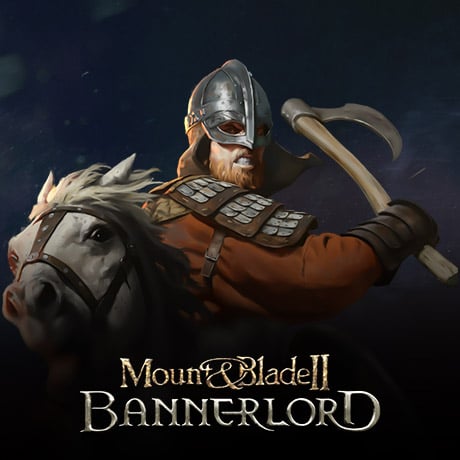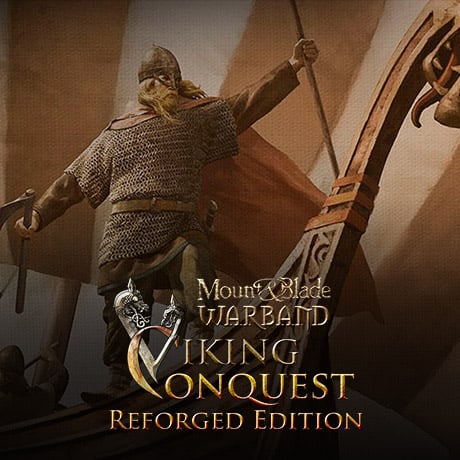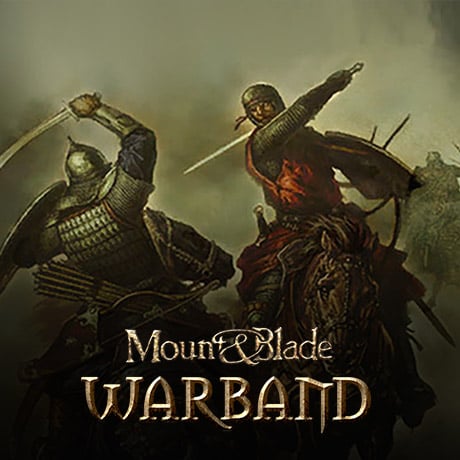- Home
- Forums
- Mount & Blade: Warband
- The Forge - Mod Development
- The Caravanserai - Released Mods
- Warband
- Brytenwalda [B]
You are using an out of date browser. It may not display this or other websites correctly.
You should upgrade or use an alternative browser.
You should upgrade or use an alternative browser.
New scenes (update 30/12/2011: Saxon Village p. 32)
- Thread starter Adorno
- Start date
Users who are viewing this thread
Total: 2 (members: 0, guests: 2)
Actually there are also ladders leading up and down a shed, and the opening in the gates is big enough for 2 people.Gerard Mulder said:Beautiful! I like the rammed gate, is it a small opening for 1 man at the time?
better angle:
Note: This is not the only new scene for v. 1.3. Just thought I'd show some progress
Great scene, as allways, Adorno 
When it's besieged, is the "gate" allways open, or will there be nice 300-against-1.000.000-fights from the beginning
When it's besieged, is the "gate" allways open, or will there be nice 300-against-1.000.000-fights from the beginning
Yes the gate is always open. It's more difficult to defend than a native scene,
since the AI will use both the entrance at the gates and the ladder.
since the AI will use both the entrance at the gates and the ladder.
Lokloklok
Squire

Adorno said:Yes the gate is always open. It's more difficult to defend than a native scene,
since the AI will use both the entrance at the gates and the ladder.
I like that, as a defender its always just Get up on the wall get your sword or axe ready and wait until they come up the ladder two by two. But with this it looks like you cant even defend the ladder point and you will have to defend the gate.
This is so amazing, I have no appropriate words to describe it!
Is that a lange seax that the archers are carrying?
Is that a lange seax that the archers are carrying?
Yes, but it's not that large. More like a knife.
Arena looks fine!
Granted that 42 unique towns is helluva lots of work, but even if you had a half or a third of that number to be unique, rest being duplicates, that would be awesome. As long as all the town scenes show the atmosphere of the dark ages Britain instead of plain vanilla, which don't fit it, it will make the gameplay immersion so much better.
Granted that 42 unique towns is helluva lots of work, but even if you had a half or a third of that number to be unique, rest being duplicates, that would be awesome. As long as all the town scenes show the atmosphere of the dark ages Britain instead of plain vanilla, which don't fit it, it will make the gameplay immersion so much better.
New town scene in 1.3
Cantwaraburh

Known today as Canterbury. In 1. century A.D. the Romans conquered the settlement from the native Celtic population and erected a town.
When barbarian (Anglo, Saxon, Jute and Frisian) raids became more frequent an earth bank with walls was built.
Eventually the Romans left and the town decayed. Within the walls meant to protect against the barbarians,
the barbarians, mostly Jutes, settled, and it was the Jutes who named the place Cantwaraburh, meaning:
"Kent people's stronghold".
Legend has it that the two Jutish brothers Hengist and Horsa landed in 449 as mercenaries for a British king, Vortigern.
They rebelled against him and Horsa founded the kingdom of Kent.
Time passes and in the year 597 King Aethelberht of Kent is the first British ruler - brytenwalda - to convert to Christianity.
And around that time Aethelberht marries Bertha, daughter of the Christian king Charibert of the Franks.
All in all the Jutish culture in Kent shows more signs of Roman, Frankish, and Christian influence than that of the Angles or Saxons.
This scene is imagination based on how a Jutish settlement may have looked.
Town center
Castle
Tavern
Prison
Merchant
Arena
Besieging Cantwaraburh
Cantwaraburh

Known today as Canterbury. In 1. century A.D. the Romans conquered the settlement from the native Celtic population and erected a town.
When barbarian (Anglo, Saxon, Jute and Frisian) raids became more frequent an earth bank with walls was built.
Eventually the Romans left and the town decayed. Within the walls meant to protect against the barbarians,
the barbarians, mostly Jutes, settled, and it was the Jutes who named the place Cantwaraburh, meaning:
"Kent people's stronghold".
Legend has it that the two Jutish brothers Hengist and Horsa landed in 449 as mercenaries for a British king, Vortigern.
They rebelled against him and Horsa founded the kingdom of Kent.
Time passes and in the year 597 King Aethelberht of Kent is the first British ruler - brytenwalda - to convert to Christianity.
And around that time Aethelberht marries Bertha, daughter of the Christian king Charibert of the Franks.
All in all the Jutish culture in Kent shows more signs of Roman, Frankish, and Christian influence than that of the Angles or Saxons.
This scene is imagination based on how a Jutish settlement may have looked.
Town center
Castle
Tavern
Prison
Merchant
Arena
Besieging Cantwaraburh
I've never seen such a wonderful town scene.
I had see it before, but i must say that this Cantwaraburh is my favorite town now
Too awesome 
I'll rent a hut in there
I'll rent a hut in there
Sure, that'll be 10 scillingas per week 
Thank you for the kind words. I made a video showing the scenes, called:
Brytenwalda - Scenes From the Dark Ages
http://www.youtube.com/watch?v=UL0_qN9MK4w
(Sorry about the low quality).
Thank you for the kind words. I made a video showing the scenes, called:
Brytenwalda - Scenes From the Dark Ages
http://www.youtube.com/watch?v=UL0_qN9MK4w
(Sorry about the low quality).
Garluch
Sergeant

Adorno said:Sure, that'll be 10 scillingas per week
Thank you for the kind words. I made a video showing the scenes, called:
Brytenwalda - Scenes From the Dark Ages
http://www.youtube.com/watch?v=UL0_qN9MK4w
(Sorry about the low quality).
Adorno, you have a gift.
Thanks 
Saxon Shore Forts
There was no Count of the Saxon Shore
To meet her hand to hand,
As she took the beach with a grind and a roar,
And the pirates rushed inland!
Rudyard Kipling, The Pirates in England
The Romans built many forts by the sea to protect against Saxon raiders, called Saxon Shore Forts;
and ironically a few of them were actually inhabited by Saxons when the Romans left.
There were 9 in total under the command of a Count - 'Comes Litoris Saxonici' ('Count of the Saxon Shore').
Most had an approximately rectangular plan, the walls being up to about 4.5m thick and 8m high, with round towers projecting at intervals and at the corners.
One example is Richborough in Kent/Cantware, one of the first places the Romans arrived in Britain, and one of the last to be abandoned.
Around year 277 to 285 the fort was built with massive walls in a rectangular shape.
Inside the walls the Saxons built their own fortification, while the Roman walls and houses decayed.


Screenshots of a siege
The outer Roman walls in decay, and Saxon settlement in the centre
First set of walls - the Roman
Second set of walls - the Saxon
Chaos at the gatehouse
Saxon Shore Forts
There was no Count of the Saxon Shore
To meet her hand to hand,
As she took the beach with a grind and a roar,
And the pirates rushed inland!
Rudyard Kipling, The Pirates in England
The Romans built many forts by the sea to protect against Saxon raiders, called Saxon Shore Forts;
and ironically a few of them were actually inhabited by Saxons when the Romans left.
There were 9 in total under the command of a Count - 'Comes Litoris Saxonici' ('Count of the Saxon Shore').
Most had an approximately rectangular plan, the walls being up to about 4.5m thick and 8m high, with round towers projecting at intervals and at the corners.
One example is Richborough in Kent/Cantware, one of the first places the Romans arrived in Britain, and one of the last to be abandoned.
Around year 277 to 285 the fort was built with massive walls in a rectangular shape.
Inside the walls the Saxons built their own fortification, while the Roman walls and houses decayed.


Screenshots of a siege
The outer Roman walls in decay, and Saxon settlement in the centre
First set of walls - the Roman
Second set of walls - the Saxon
Chaos at the gatehouse
Similar threads
- Replies
- 33
- Views
- 6K





































